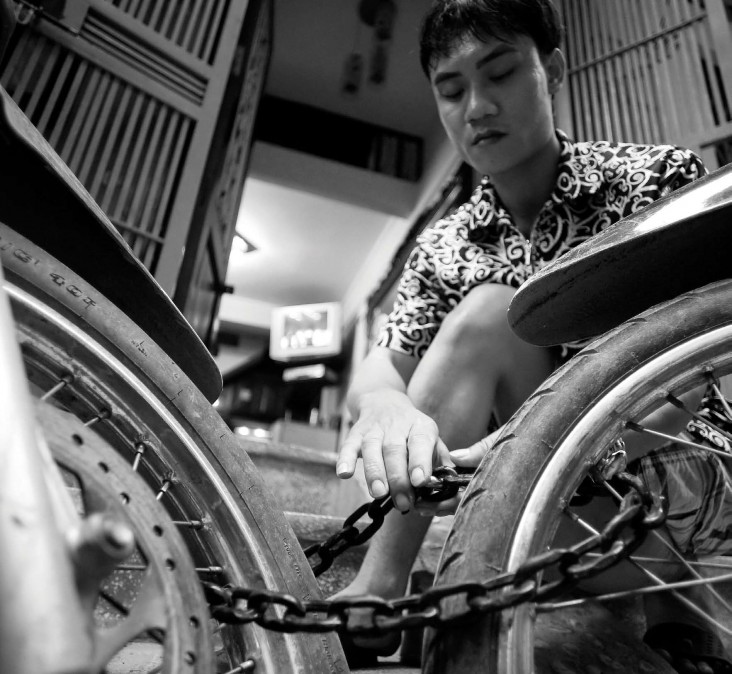
Dang Tran Khanh runs his fingers along his motorcycle chain. “My father bought this plastic-coated chain to prevent abrasions,” he said. “It used to be for chaining me [so I could not leave home in search of drugs]. Now my dad and I use it to lock up the motorbike, to keep it from getting stolen at lunch.” Khanh is a former Hanoi drug user, who appears among the more than 100 photos in “Face-to-Face with Drugs”—Vietnam's first photo exhibition on the lives of drug users. The event was organized by USAID and its partners and launched with PEPFAR funding in June 2011 in Hanoi and November 2011 in Ho Chi Minh City.
Injecting drug users are one of the groups most at risk of contracting HIV in Vietnam. HIV prevalence among this group is estimated between 21 and 56 percent in the major cities. During a year spent documenting the stories of 50 recovering or current drug users across the country, photographer Pham Hoai Thanh was able to document the impact of USAID actions to help respond to the epidemic.
Individuals such as Nguyen Manh Chien demonstrate the effectiveness of treating heroin addiction with methadone, a method piloted by USAID at 16 drug-treatment sites in Vietnam. No longer addicted thanks to methadone, Chien said: “When I’m out in public, I don’t have to keep my face down.” More than 7,100 people are now receiving methadone supplied by USAID at over 40 sites.
Since 2004, USAID and implementing partner Pact have also supported civil society to engage in Vietnam’s response to HIV. The exhibition captures the success of groups such as the Coming Home Coalition in Hanoi, 70 percent of whose members quit using drugs within six months of starting treatment; and Project NAM, which reached 11,000 homeless, HIV-affected youth with messages on infection reduction and safer sex in 2010.
The launch brought former drug users onto the same stage as Le Duc Hien, deputy director of the Department of Social Evils, who reiterated official plans to ease the punishment of drug use. Pham Thi Minh, head of the Coming Home Coalition, closed by saying: “I want the community to see us. We can be healthy. We can be beautiful.”







Comment
Make a general inquiry or suggest an improvement.